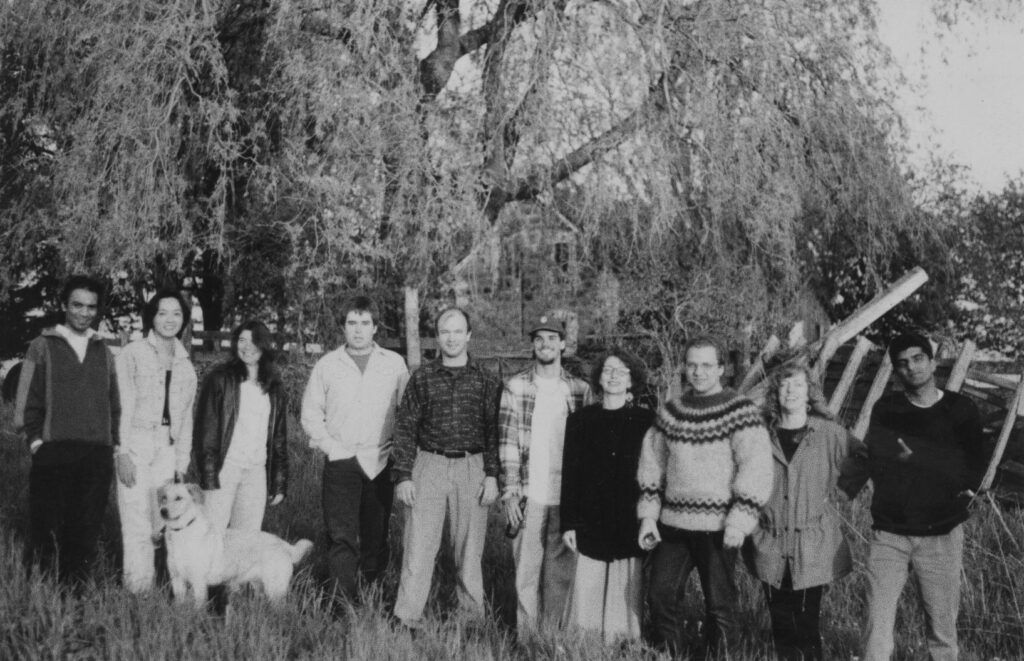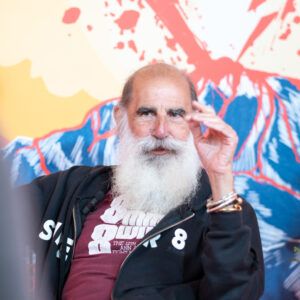Phil Hoffman tells us the story of his project, the Film Farm in Ontario, Canada, that turns 30 years old this year.

THE INSPIRATION
By the late 80’s I had finished a series of autobiographical films, and luckily had the opportunity to travel. On these trips I did filmmaking workshops, really precursors to Film Farm and the Process Cinema workshops developed later. On these trips I started giving filmmaking workshops in various places like Helsinki. Being away wiped the slate clean and allowed me a time and place to imagine another kind of teaching, more open than what the University could offer. The experience would evolve around a process of discovery.
The other aspect was striving for the communal. I saw from a previous experience the intensity that ensues when a group of like-minded people gather for a week in a kind of art-making bubble. Though only 1 week together, those friendships seemed to reverberate for a lifetime, through this intense sharing. Films surface from this intensity, sometimes after 7 days, sometimes films trickle out after several years.
THE BEGINNING OF THE FILM FARM
The first workshop of Independent Imaging Retreat (later to be coined affectionately “Film Farm” by writer/filmmaker Chris Gehman) was in May of 1994. We actually did a kind of trial run “Cinematography for Women” workshop through the Sheridan College Summer School, where I was teaching in Media Arts, and for that I talked some of my film students into coming up to the Farm to get the barn ready. It was quite a task as the barn was filled to the brim with hay and we had to get a local farmer’s bailer over to get rid of it. Some of those students, Rob Butterworth and Tracy German, were instrumental in setting up the workshop and Rob is still with the collective in its 30th year, and Tracy still makes films and teaches now, at Sheridan College.
I remember the first Film Farm to be cold and rainy. We barely got enough participants
to give it a go. I was terribly worried that the 6 participants would just hate it. On top of that the black and white 7378 acetate based hi-con film (we now use 3378 which is the same but mylar-based) was coming out extremely green due to, we later thought, the high iron content in the ground water at the farm. But actually the participants were so happy just to see that they got an image and they made it themselves! I still see their glowing smiles, peering at the image…wow!!! Later Rob figured out the green film issue by adding sodium sulphite to the reversal process to remove the green tinge, and that’s kind of the way the workshop evolved, through unpredictable means that took us in one direction or another. I am still loosely in touch with most of those first participants, many of them continuing their film practice in different ways.
THE EVOLUTION
In the early days we processed film in a small processing machine but we quickly changed to bucket processing, due to Rob Butterworth’s trip to Europe a few months after our first Film Farm Retreat, where he attended a hand processing workshop in Leuven, Belgium at Stuc/Kapstuc conducted by Yann Beauvais, Yurgen Rebel, Karel Doing, and Xavier Auerel. This workshop directly affected our move from machine processing to hand processing.
The change to bucket processing allowed for more freedom, and more of a possibility to engage with the image directly, following the path of Man Ray. For us the accidents continued to be a sign post to follow for new processes and practices, just as Man Ray and Lee Miller discovered solarisation when a light was turned on by accident.
Karel Doing was around again to mark another important change in the Film Farm, when he came in 2018 and taught us the Phytogram processes which he was developing. We had already been experimenting with caffenol and flower-processing & tinting practices before 2010 but it wasn’t until Karel’s visit that we decided that it was time to go full steam ahead on plant-based processing and concentrating the workshop on a relationship with the land and its floral inhabitants, surrounding the Farm.
One of the more recent highlights of Film Farm’s thirty year hand-made filmmaking journey, was during a collaboration with Saugeen First Nation, Chippewa Hill, an hour north of the farm. The workshop was conceived as an exchange. Saugeen Elders would teach us about the medicinal properties of plants, and we would teach local artists with varying art practices (painting, dance, storytelling, beading) how to process film with flowers. The workshop opened with a welcoming ceremony led by educator and Elder herbalist, Lori Kewaquom. When I somewhat proudly told Lori that at Film Farm when we collect plants for processing film we never take more than 25% of the plant, so that it could regenerate, she generously remarked that next week she would teach us how to ask the plant how much we could take. And she did. The whole process was based on bodily responses to the plants and a playful conversation with ourselves.
THE INFLUENCE OF THE FILM FARM
At first it was my filmmaking practice of working through chance occurrences and with aleatory processes, which led me to want to start a workshop where process is more important than the finished piece. Something that was far off from the way filmmaking seemed to be evolving in the early 90’s, especially within mainstream cinema and throughout film education centers. I was seeing talented young filmmakers get drawn into industry practices, where funding and script prep would keep them far away from actual making. At Film Farm you shoot first and ask questions later, which evolves from a trust in spontaneity as a starting point.
The Film Farm is a yearly occurrence, that reminds me of this dictum of spontaneity. I think my works have gotten a lot less laboured because of Film Farm’s influence. It’s an ecology derived from my everyday life. For sure Vulture (2019) and Deep 1 (2023) are made on the spot and in “this” place at the farm. I process what I shoot, with the flowers that are blooming at the time. I have to freeze some for winter shooting. I get to know when and where certain plants will be coming up in the spring. It’s all based on a connection to these cycles.
More info on Film Farm beginnings here.





